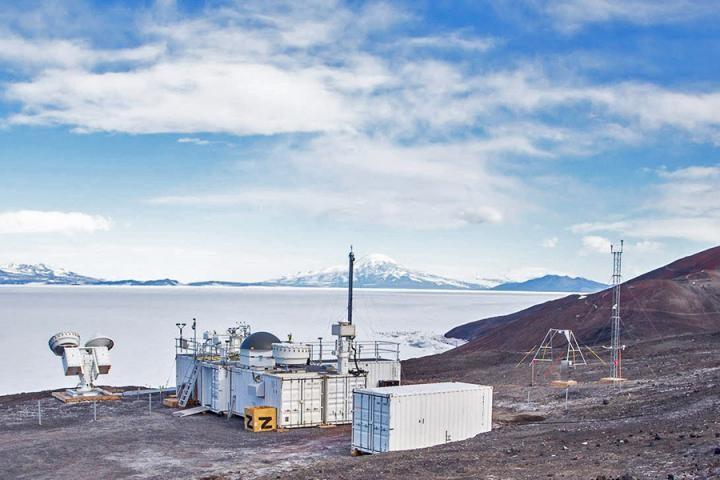
When the temperature drops below freezing, snow and ice are expected to follow. That is not always the case in Antarctica, where for the first time, persistent drizzle has been recorded at temperatures well below freezing, according to a team of researchers.
Using both ground-based and satellite measurements, researchers recorded drizzle conditions below minus 13 degrees Fahrenheit lasting for more than 7.5 hours at McMurdo Station, Antarctica. Previous reports recorded supercooled drizzle at these temperatures, but only for brief durations. The presence of drizzle over several hours could have some implications for climate model predictions. The researchers published their findings in the Journal of Geophysical Research: Atmospheres.
"We're familiar with drizzle as a process that takes place in warm temperatures," said Israel Silber, assistant research professor in the Department of Meteorology and Atmospheric Science at Penn State and lead author of the study. "At lower temperatures, processes like ice formation and growth make the probability for drizzle production significantly lower."
Data collected from laser measurements indicated the presence of water particles -- hydrometeors, that were nearly spherical, which can indicate drizzle drops. Analysis of these data combined with other ground-based and satellite measurements confirmed that the particles were indeed drops of drizzle.
Meteorologists define drizzle as water droplets smaller than 0.5 millimeters in diameter, or about one-five-hundredth of an inch. According to Silber, drizzle and rain are treated interchangeably in climate models given that both are in a liquid phase, compared to other hydrometeors, such as snow and hail. The presence of long-lasting drizzle in a very cold region like Antarctica has implications for improving the accuracy of climate models in the polar regions.
"Drizzle should be properly simulated in models because it removes water from the cloud layer when droplets combine with one another and eventually fall," Silber said. "That means drizzle would affect the cloud's lifetime, which would influence the amount of heat reaching the Earth's surface."
The data collected in these observations were used in high-resolution model simulations of the polar atmosphere. By virtually emulating the conditions that allowed the observed cloud to form, the researchers could identify the parameters that influence the production of drizzle by adjusting other variables within the simulation.
Using the simulations, the researchers found that low concentrations of some types of particles suspended in the Earth's atmosphere, such as sea-salt and dust, were highly conducive to drizzle formation.
"In Antarctica, the air is very clean," said Silber. "There are fewer pollutants, and therefore fewer airborne particles."
The low concentration of these particles allowed the drizzle to remain in liquid form, even though the air temperatures were well below freezing.
© 2025 NatureWorldNews.com All rights reserved. Do not reproduce without permission.





